Home Tags Posts tagged with "max planck institute"
max planck institute
According to early studies in mice, a diet high in cholesterol may help people with Pelizaeus-Merzbacher disease, a fatal genetic disease which damages the brain.
Patients with Pelizaeus-Merzbacher disease (PMD) struggle to produce a fatty sheath around their nerves, which is essential for function.
A study, published in Nature Medicine, showed that a high-cholesterol diet could increase production.
The authors said the mice “improved dramatically”.
PMD is one of many leukodystrophies in which patients struggle to produce the myelin sheath. It protects nerve fibres and helps messages pass along the nerves.
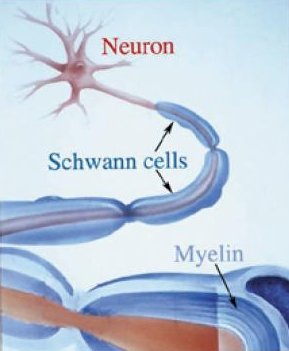
Patients with Pelizaeus-Merzbacher disease (PMD) struggle to produce a fatty sheath around their nerves, which is essential for function
Without the sheath, messages do not travel down the nerve – resulting in a range of problems including movement and cognition.
Researchers at the Max Planck Institute of Experimental Medicine, in Germany, performed a trial on mice with the disease and fed them a high cholesterol diet.
The first tests were on mice when they were six weeks old, after signs of PMD had already emerged. Those fed a normal diet continued to get worse, while those fed a cholesterol-enriched diet stabilized.
“This six-week-long cholesterol treatment delayed the decline in motor co-ordination,” the scientists said.
Further tests showed that starting the diet early was more beneficial, leading the researchers to conclude that in mice “treatment should begin early in life and continue into adulthood”.
This study was only in mice, meaning it is not known if there would be a similar effect in people – or if there would, how early treatment would have to start.
The authors of the report said: “Dietary cholesterol does not cure PMD, but has a striking potential to relieve defects.”
It is thought the cholesterol frees up a “traffic jam” inside cells in the brain. The disease is caused by producing too much of a protein needed in myelin, which then becomes stuck inside the cells. It is thought the extra cholesterol helps to free up the protein.
Scientists have succeeded to decode the bonobo genome, the biochemical instructions in the ape’s cells that guide the building and maintenance of the animal’s body.
It is the last great ape to have its DNA sequence laid bare, following the chimpanzee, orangutan and gorilla.
Comparisons of all their codes, including the human genome, will shed new light on the biology and evolution of these closely related species.
The sequencing and analysis work is reported in the journal Nature.
It was undertaken by an international team led from the Max Planck Institute (MPI) for Evolutionary Anthropology in Leipzig, Germany.
The samples for study were taken from a female bonobo known as Ulindi which resides in Leipzig zoo.
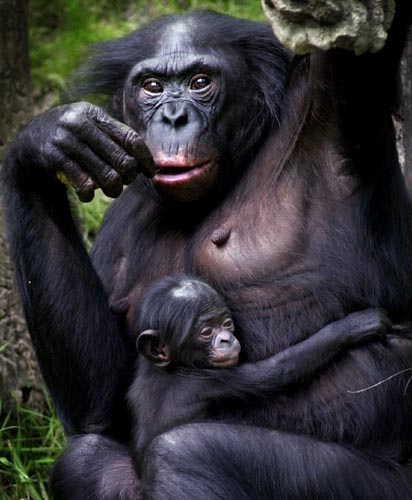
Scientists have succeeded to decode the bonobo genome, the biochemical instructions in the ape's cells that guide the building and maintenance of the animal's body
Bonobos (Pan paniscus), together with chimpanzees (Pan troglodytes), are the closest living relatives of humans.
If one compares the DNA “letters” in the sequences of all three species, there is only a 1.3% difference between humans and their ape cousins.
The separation between the bonobo and the chimp is smaller still. Only four letters in every thousand is changed.
“Based on the differences that we observe between the genomes, one can actually estimate when the last common ancestor between these species lived,” explained MPI’s Kay Prufer.
“And between chimpanzees and bonobos that is maybe a million years in the past. For the chimps, bonobos, and humans – the common ancestor of all three lived somewhere around four to five million years ago,” he said.
Bonobos and chimpanzees live very near to each other in central Africa, but their populations are separated by the Congo River.
Indeed, it has long been thought that the creation of the river about two million years ago was responsible for the divergence of the species. And the new analysis certainly seems to support that hypothesis, with no significant signal of interbreeding detected in the DNA of the apes.
“It seems there was a very clean split,” said Dr. Kay Prufer.
But as similar as their genomes are, bonobos and chimps do display some quite diverse behaviors.
Chimps are very territorial and resort to aggressive actions to resolve conflicts, whereas bonobos are more placid and will use sex as a tool to settle their differences.
The researchers want to learn something about the origin of these behaviors, and the degree to which they are influenced by genetics.
“That’s the great hope,” said Dr. Kay Prufer.
“If you look at bonobos, chimpanzees and humans, what you can see is that there are some specific characteristics that we share with both of them.
“So, for instance, the non-conceptive sexual behavior is a trait that is certainly shared with bonobos, while the aggressive behavior unfortunately is also a trait that is shared with chimpanzees.
“In a way, it is a question of what the ancestor of all three looked like. Which one actually evolved the new trait here?”
To get at some answers, scientists plan to look more deeply at those parts of the genomes where humans share more similarity to bonobos or chimpanzees. It turns out that that more than 3% of the human genome is more closely related to either the bonobo or the chimpanzee genome than these are to each other.
Scientists claim that spacecrafts could one day navigate through the cosmos using a particular type of dead star as a kind of GPS.
German scientists are developing a technique that allows for very precise positioning anywhere in space by picking up X-ray signals from pulsars.
These dense, burnt-out stars rotate rapidly, sweeping their emission across the cosmos at rates that are so stable they rival atomic clock performance.
This timing property is perfect for interstellar navigation, says the team.
If a spacecraft carried the means to detect the pulses, it could compare their arrival times with those predicted at a reference location. This would enable the craft to determine its position to an accuracy of just five kilometres anywhere in the galaxy.
“The principle is so simple that it will definitely have applications,” said Prof. Werner Becker from the Max-Planck Institute for Extraterrestrial Physics in Garching.
“These pulsars are everywhere in the Universe and their flashing is so predictable that it makes such an approach really straightforward,” said Prof. Werner Becker.
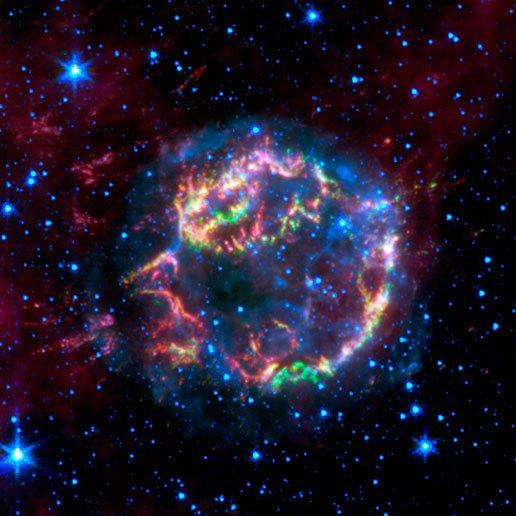
Spacecrafts could one day navigate through the cosmos using a particular type of dead star as a kind of GPS
Prof. Werner Becker has been describing his team’s research here at the UK National Astronomy Meeting in Manchester.
The proposed technique is very similar to that employed in the popular Global Positioning System, which broadcasts timing signals to the user from a constellation of satellites in orbit.
But GPS only works on, or just above, the Earth so it has no use beyond our planet.
Currently, mission controllers wanting to work out the position of their spacecraft deep in the Solar System will study the differences in time radio communications take to travel to and from the satellite. It is a complex process and requires several antennas dotted across the Earth.
It is also a technique that is far from precise, and the errors increase the further away the probe moves.
For the most distant spacecraft still in operation – NASA’s Voyager satellites, which are now approaching the very edge of the Solar System, some 18 billion km away – the errors associated with their positions are on the order of several hundred kilometers.
Even for a probe at the reasonably short separation of Mars, the positioning uncertainty can be about 10 km.
It is unlikely though that navigation by pulsar beacon will find immediate use.
The telescope hardware for detecting X-rays in space has traditionally been bulky and heavy.
Engineers will need to miniaturize the technology to make a practical pulsar navigation unit.
“It becomes possible with the development of lightweight X-ray mirrors,” said Prof. Werner Becker.
“These are on the way for the next generation of X-ray telescopes. Current mirrors have a 100 times more weight and would be completely unusable.
“In 15-20 years, the new mirrors will be standard and our device will be ready to be built.”
The scientist believes his navigation solution will certainly find use on Solar System probes, providing autonomous navigation for interplanetary missions and perhaps for future manned ventures to Mars where high performance systems will be an absolute requirement for safety reasons.
But he also likes the idea of humanity one day pushing out across interstellar space.
“You know for GPS that if you go to another country, you have to buy the maps for your device. Well, we were joking with our students in Garching about selling maps for different galaxies for ships like Enterprise [on Star Trek].”
Vast amounts of gas and dust have been detected in the galaxy that contains the most distant supermassive black hole known to science, announced astronomers.
The galaxy, called J1120+0641, is so far away, its light has taken more than 13 billion years to reach Earth.
Researchers say they were surprised to see so much carbon in the observations.
The element is made via nuclear fusion of helium in massive stars and ejected when these giants end their lives in dramatic supernova explosions.
It is an indication of just how dynamic the early Universe must have been, said Bram Venemans, of the Max-Planck Institute for Astronomy in Heidelberg, Germany.
“The glow of carbon tells us there are stars being formed, and the dust also tells us that – that there is lots of ultraviolet light [from bright new stars] heating the dust. But the amount of carbon we can derive means a lot of stars must have formed and produced this carbon,” said Dr. Bram Venemans.
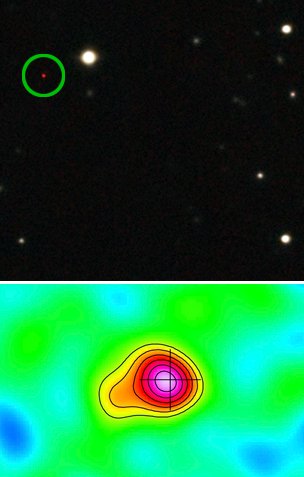
Vast amounts of gas and dust have been detected in the J1120+0641 galaxy (that red dot in green circle) contains the most distant supermassive black hole known to science
Dr. Bram Venemans was speaking here in Manchester at the UK National Astronomy Meeting (NAM).
He and colleagues used the IRAM array of millimetre-wave telescopes in the French Alps to make their study of J1120+0641.
They see the distant galaxy as it was just 740 million years after the Big Bang, when the abundance of chemical elements in the cosmos would have been dominated far more by hydrogen and helium than it is today.
The supermassive black hole at the galaxy’s core is about two billion times the mass of our sun, and shines as it shreds the matter falling into it.
The team might have expected to see a strong signal for heavier elements (or “metals” as astronomers refer to them) in this energetic emission, but the IRAM detects carbon across the galaxy.
“We found this accreting black hole and you see these metal lines, and that is not too surprising. This is quite a small region of space and you only need a couple of stars to go into the black hole to pollute its signal. But it’s the same across the galaxy,” Dr. Bram Venemans explained.
This indicates J1120+0641 is rapidly producing stars, cycling heavier and heavier elements as they go though the generations.
From their observations, Dr. Bram Venemans and colleagues calculate that J1120+0641 was forming those stars at a rate 100 times that seen in our Milky Way Galaxy today.
This is not quite as fast as some big galaxies later in cosmic time, but it is still an impressive performance.
“The presence of so much carbon confirms that massive star formation must have occurred in the short period between the Big Bang and the time we are now observing the galaxy,” the Heidelberg researcher said.
The team credits the success of its study to a recent upgrade to the IRAM facility, which sits 2,550-m up on the Plateau de Bure. The processing of the signals received by the observatory’s six dishes is now much improved.
“We would not have been able to detect this emission only a couple years ago,” said team member, Dr. Pierre Cox, director of IRAM.
Experts found that although chimps may be known as the brains of the animal kingdom, sometimes only dogs get the point.
Scientists pointed at one of two objects, asked for it to be brought to them, and counted up how many times their orders were obeyed.
In the study, the dogs did better than the chimps, despite the chimpanzee’s brain being the more similar to the human brain.
The research team, from the Max Planck Institute in Leipzig, Germany, placed pairs of similar-looking objects, such as a piece of hosepipe and a piece of rope, at the back of a room.
The researchers then pointed to the one they wanted, while order a dog or chimp standing with its back to the objects, to fetch the correct one.
If it did as asked, it was given some food as a reward.
Babies are capable of following such orders from the age of 14 months, suggesting the task is relatively simple, at least for the human brain.
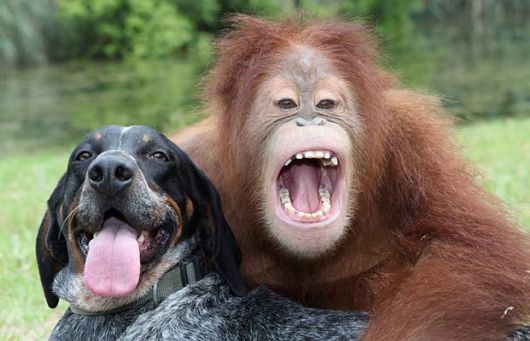
In the study, the dogs did better than the chimps, despite the chimpanzee’s brain being the more similar to the human brain
Despite this, none of the chimps picked the object that had been pointed out at a rate that was higher than chance. However, more than a quarter of the dogs appeared to understand the task, the journal PLoS ONE reports.
The German scientists suggested their results could be explained by pet dogs being bred to follow orders.
The scientists said: “Dogs’ special receptiveness to human co-operative communication makes them the perfect social tool for certain activities like herding and hunting.
“One hypothesis is that dogs see human communication as imperatives and spatial directives, ordering them what to do and where to go next.”
Previous research has concluded that dogs make better pets than cats – but only by a whisker.
In the comparison of 11 traits from brain size to environmental impact, dogs came out on top in six categories to cats’ five.
But cat lovers may have the last laugh, with other research concluding that they are the top dogs for brains.
A British study found that people with university degrees are more likely to have a cat than a dog.





